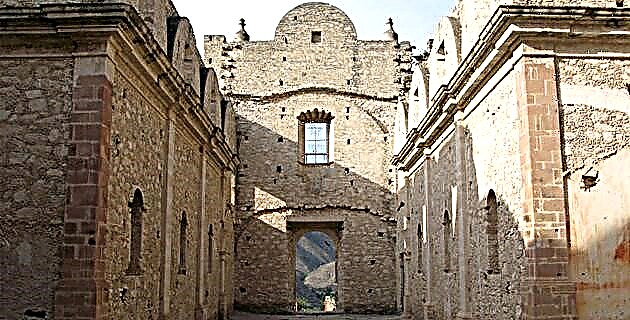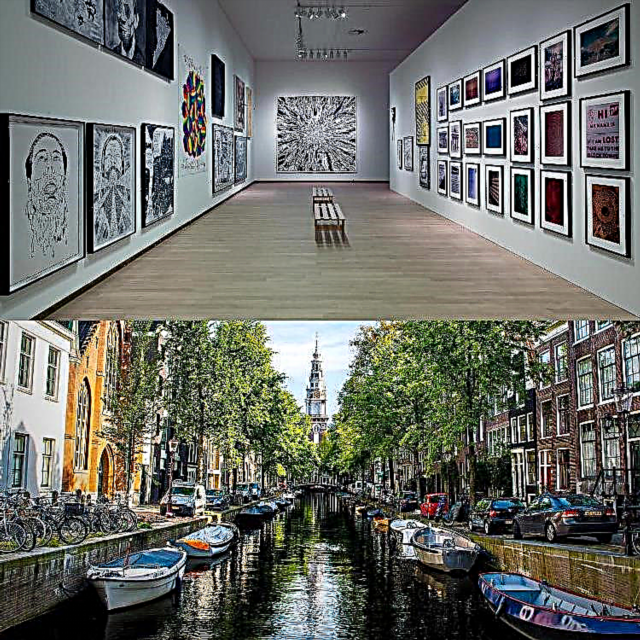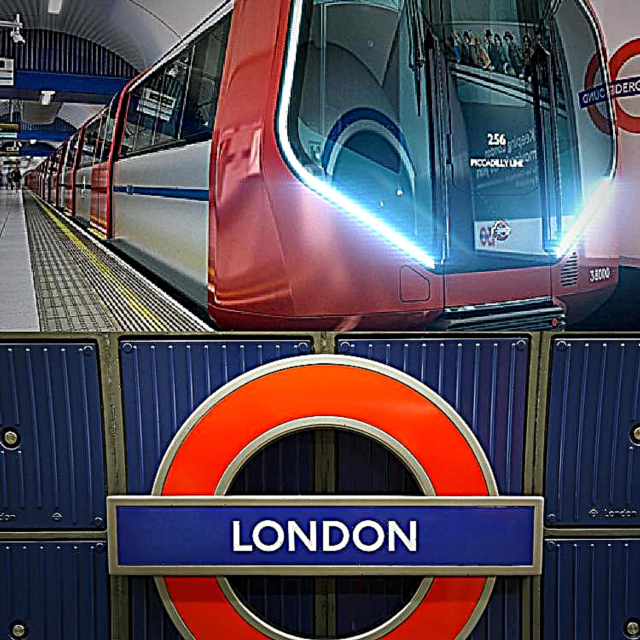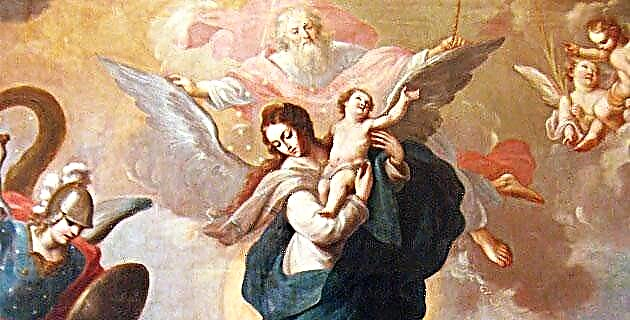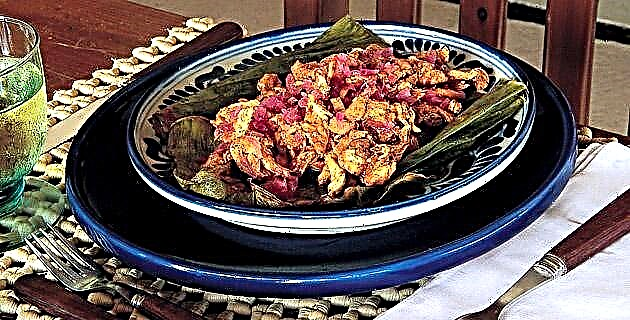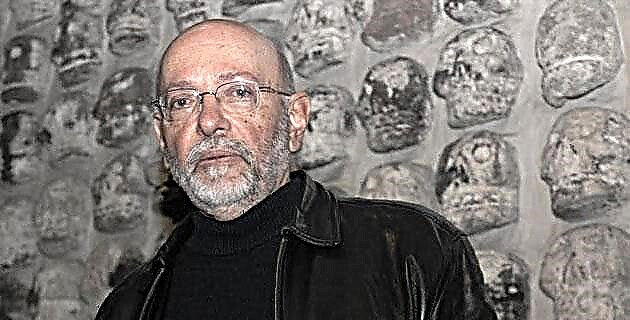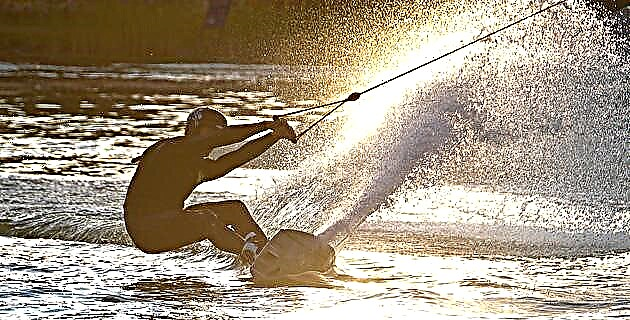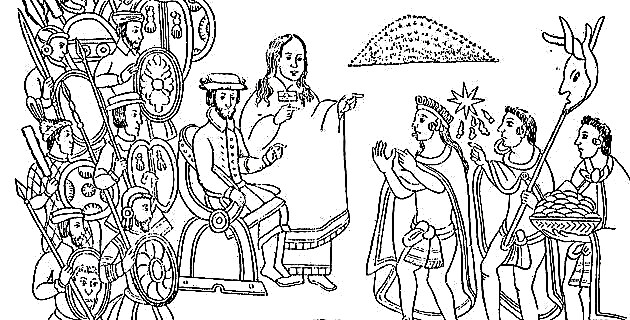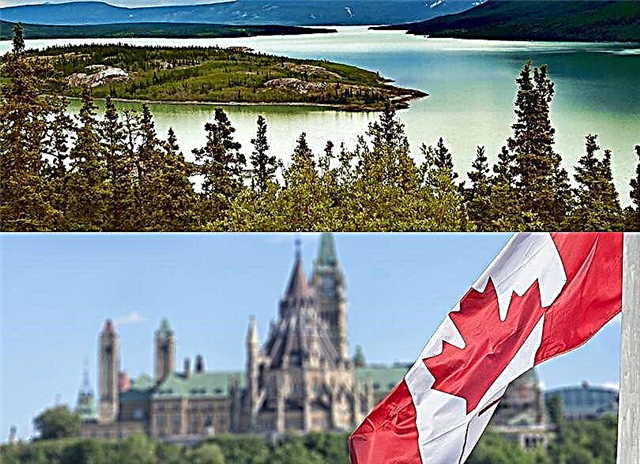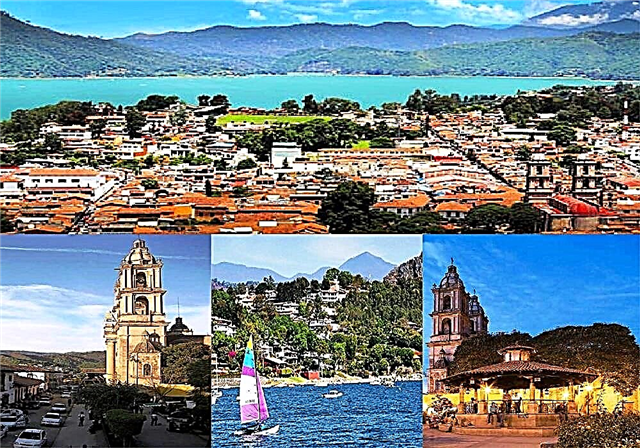East Magic Town Mexica is one of the favorite weekend destinations of the Mexican capital and other nearby cities, due to its exquisite climate, beautiful architecture, natural landscapes, excellent gastronomy and other attractions. We invite you to know it fully with this complete guide.
1. Where is Valle de Bravo located?
Valle de Bravo is a small city located in the central-western sector of the State of Mexico. It is the head of the municipality of the same name and borders the Mexican municipalities of Donato Guerra, Amanalco, Temoaya, Zacazonapan, Otzoloapan, Santo Tomás and Ixtapan del Oro. Toluca is 75 km away. from Valle de Bravo and Mexico City is also very close, only 140 km., so the Magic Town receives a large stream of capital, both state and national, every weekend.
2. What are the main historical features of the town?
The indigenous name of Valle de Bravo is "Temascaltepec", a Nahua term that means "place on the hill of the steam baths." During pre-Hispanic times it was inhabited by the Otomí, Mazahua and Matlatzinca peoples. The Franciscan friars founded the Hispanic settlement in 1530, which after Independence was renamed Valle de Bravo in honor of Nicolás Bravo Rueda, collaborator of Morelos and President of the Republic on 3 occasions between 1839 and 1846. In 2005, Valle de Bravo it was incorporated into the Mexican Magic Towns system.
3. What is the local climate like?
Valle de Bravo enjoys a pleasantly cool climate without extremes, thanks to its altitude of 1,832 meters above sea level. The annual average temperature is 18.5 ° C, which drops to the range of 16 to 17 ° C in winter and only rises to 20 or 21 ° C in the pleasant summer. In cases of exceptional heat, the thermometer never reaches 30 ° C, while the rare extreme cold is 8 ° C, but not less. The precipitations are of 948 mm to the year, with a rainy season that goes from June to September.
4. What are the essential places to visit and things to do in Valle de Bravo?
We suggest that you start your tour of the town through the historic center, strolling through its cobbled streets and visiting its churches and museums. Some must-see stops are the Temple of Santa María Ahuacatlán, the Church of San Francisco de Asís, the Carmel Maranathá, the Joaquín Arcadio Pagaza Museum and the Archaeological Museum. A short distance from the town is the Great Stupa for World Peace, a Buddhist monument of great spiritual and architectural interest. The main natural spaces to walk and practice your favorite entertainments in water, air and land are the Valle de Bravo Lake, La Peña and the Monte Alto State Reserve. Another picturesque place to visit is the Mercado el 100. In the neighboring municipalities, we recommend you visit Temoaya and Ixtapan del Oro. If you can make your visit coincide with the dates of the Festival of Souls or the International Festival of Music and Ecology, you will round up a unforgettable visit to Valle de Bravo.
5. What does the historic center have?
The historic center of Valle de Bravo is a haven of peace, with its cobbled streets, main square, parish church, typical houses, markets, restaurants and handicraft shops. The houses built flanking the sloping streets and alleys are made of adobe, brick and wood, with white walls protected by dust covers and red gabled tile roofs. The striking residential architecture is completed by large windows and picturesque balconies, where the beauty of plants and flowers is never missing. Visitors love to walk through the historic center while enjoying artisanal snow and asking friendly Vallesans about sights.
6. What is the interest of the Temple of Santa María Ahuacatlán?
Although this temple in the Barrio de Santa María has a Marian name, it is most famous for its Black Christ, one of the most venerated images of Jesus in all of Mexico. The tradition of the black christs was born in Mesoamerica at the end of the 16th century, when the now famous Black Christ of Esquipulas, Guatemala, was carved out of wood that turned black over the years. The history of the Black Christ of Ahuacatlán is a little different; a fire destroyed the old chapel that housed it and the image was miraculously intact, but it had been obscured by the smoke. Inside the church there are also 4 large paintings alluding to the legends around the Black Christ.
7. What is the Carmel Maranathá?
Only 5 km. from Valle de Bravo, by the road that goes to Amanalco de Becerra, is this Christian refuge that by name seems more like a Hindu temple. It was built in the 1970s as a House of Prayer for monks of the Discalced Carmelite order. It is a place of retreat and meditation that is open to the public between 10 AM and 6 PM. The term "Maranathá" is of Aramaic origin, it appears in the Bible mentioned by Saint Paul in the First Epistle to the Corinthians and it means "The Lord is coming." The refuge has a majestic façade and its interior is beautifully decorated with paintings, sculptures and objects.
8. What is the interest of the Great Stupa for World Peace?
Stupas or stupas are Buddhist funerary monuments. The one that was built in Ranchería Los Álamos, near Valle de Bravo, is not only the first in Mexico, but also the largest in the Western World, with a height of 36 meters. The beautiful construction is made up of a square base and an immaculately white semi-vault, with a golden image of Buddha, topped with a conical tip, a crescent moon and a circular disk, also gilded. It is located in the middle of a beautiful landscape and nearby are several hermitages used by Buddhist monks for their meditations and prayers.
9. What is the Church of San Francisco de Asís like?
The construction of this temple began in 1880, ending more than 100 years later, in 1994. Its two slender twin neoclassical towers represent the highest points among the religious buildings in the state of Mexico. The temple was built in the same place as a 17th century church that had two naves, one for the white population and the other for the indigenous people. The baptismal font, the font with holy water and a beautiful carved image of the patron Saint Francis of Assisi were preserved from the old church. During the Mexican Revolution, the main bell, which received the name "Santa Bárbara", was destroyed by shrapnel, being replaced by "San Francisco".
10. What can I do at Lake Valle de Bravo?
Valle de Bravo Lake is the reservoir that was formed in the late 1940s when the Miguel Alemán Hydroelectric System was built. The hydroelectric power station ceased to function, but the lake remained as a source of drinking water and a magnificent setting for the practice of aquatic entertainment, such as skiing, sailing, boating, sport fishing and exciting flyboarding. You can also tour the body of water in a tourist boat and stop to eat or drink something in one of its floating restaurants.
11. Where is La Peña located?
The Peña del Príncipe is a rocky promontory visible from different points of the town, which is a natural viewpoint, offering the most spectacular views of Valle de Bravo and its surroundings, especially at sunset. It is guarding the town and the lake and there is a route to go on foot from the town, and you can also do the car ride to a point where you have to park and continue walking. To access the rock from the town, you have to go to the main square and go up Calle Independencia, continuing along the old road to La Peña. If you go at sunset, be sure to bring a flashlight for the descent.
12. Can I practice adventure sports in the Monte Alto State Reserve?
This ecological reserve of Valle de Bravo is a structure formed by three inactive volcanoes with gentle slopes, which the ancient Matlatzincas called "Cerro de Agua" because in the rainy season they heard the sound of moving underground currents. It is the best place near the town to take off for hang gliding and paragliding. It has a 21 km circuit. for mountain biking, divided into three sectors: advanced, intermediate and beginner. Biodiversity watchers can also entertain themselves in the reserve's ravines and forests, admiring the regional flora and fauna, which includes some species of beautiful orchids.
13. What is there to see at the Joaquín Arcadio Pagaza Museum?
Joaquín Arcadio Pagaza y Ordóñez was a bishop, writer and academic born in Valle Bravo in 1839. In his honor, the museum that bears his name was opened in the town, which operates in the 18th century mansion where the illustrious prelate lived. The institution is dedicated to the conservation and dissemination of the Vallesana culture, and exhibits a collection of pieces belonging to the bishop, as well as the artistic work of local, state and national creators. The museum is also the scene of cultural events such as concerts, conferences, plays and film screenings.
14. What is the interest of the Archaeological Museum?
This museum located on Avenida Costera, in the Barrio de Santa María Ahuacatlán, exhibits nearly 500 pieces of the pre-Hispanic cultures that inhabited Mexico, rescued from 18 archaeological sites located in the state of Mexico. Among the most outstanding pieces are several stone heads recovered in Valle de Bravo, as well as figurines, pottery, necklaces made with different materials, shredders of vegetable plants used in basketry and weaving, indigenous utensils for spinning and other objects.
15. What is the 100 Market?

The curious concept of this market is that it brings together artisanal agricultural producers who are 100 kilometers around, although those who want to expand it further, speak of 100 miles. They claim that everything they sell is grown, raised or prepared using organic methods. There you will find dairy (cheeses, butter, creams), vegetables, greens, tubers, cereals, grains, aromatic herbs and other natural and processed products. They open on Saturdays from 11 AM to 6 PM in front of the main port, precisely thinking that weekend visitors return with their healthy and healthy market already in the trunk of the car.
16. Are there other places of architectural and tourist interest in the town?
The kiosk located in the central garden is one of the emblems of the town and one of its most photographed places. Another building of interest is La Capilla, in which the people of Valleys venerate Our Lady of Guadalupe. El Mirador Los Tres Árboles is a beautiful two-level building with wide arches, from which you can admire the lake and the mountains while enjoying an artisanal snow. The Parque del Pino is another welcoming public space where there is an ahuehuete (Ciprés Moctezuma) that according to tradition, is more than 700 years old.
17. What is the Festival of Souls?
The Vallesano International Festival of Art and Culture of Las Almas, by its full name, was born in 2003 as an initiative of the Instituto Mexiquense de Cultura and private organizations and since then it has summoned tens of thousands of people to the Magic Town. It takes place for 9 days around the Day of the Dead and offers concerts of various musical genres, art exhibitions, dance, theater, puppets, ballet, readings and other cultural events. Practically all the public spaces in Valle de Bravo, such as the Bicentennial Stadium, the Plaza de la Independencia, the Joaquín Arcadio Pagaza Museum, the Casa de la Cultura, the Archaeological Museum, are the scenes of the busy activities.
18. What is the objective of the International Festival of Music and Ecology?
This festival had its inauguration in 1996 and is celebrated during a week of the month of March, although it can change months. It is aimed at promoting a culture of preserving the environment using musical concerts and other artistic events as a communication vehicle. Cult music concerts are usually presented with the participation of different symphonic and chamber orchestras, groups and bands of pop music, dance, ballet and other manifestations, all complemented by the Feria de la Tierra, in which the producers of the area show their products harvested in an ecological way.
19. What can I see in Temoaya?
The municipal seat of Temoaya is 78 km away. Valle de Bravo and indigenous tourism enthusiasts delighted with the great heights, will surely want to visit it to see its interesting Otomí Ceremonial Center. This center was inaugurated in 1980 to provide the Otomí people with an appropriate place to practice their rites and preserve their traditions. It is located 3,200 meters above sea level, so it is not unusual to see high-performance athletes in the area in search of maximum resistance. Every March 18, the Otomi perform the ceremony of the Fifth Sun and on the first Sunday of each month a ritual of invocation of the 4 cardinal points and of gratitude to the universal gods takes place.
20. What is the interest of Ixtapan del Oro?
50 km. from Valle de Bravo, almost on the border with Michoacán, is the town of Ixtapan del Oro, head of the municipality of the same name. This cozy town of houses with red roofs, has a picturesque market and in its main garden there is a pedestal with a goddess carved out of rock by the Aztecs, whose name is unknown. Near the town is El Salto, a beautiful 50 meter waterfall, and Las Salinas Camp, a place with cabins for rent, thermal pools and beautiful gardens and green areas.
21. Where can I buy a souvenir?
The artisans of the municipality of Valle de Bravo work splendidly the brown clay pottery, which they extract from the nearby mines, as well as the high-temperature ceramics. The weaving crafts are made mainly by the indigenous population, particularly the Otomi, Matlatzincas and Mazahuas. They are also skilled with wrought iron and wood, both in furniture, doors and windows, and in smaller decorative pieces. You can admire all these objects and others from nearby states, in the Handicraft Market, located on the corner of Juárez and Peñuelas, 4 blocks from the main square.
22. What is the local gastronomy like?
The culinary art of the Valleys is very Mexican, being good eaters of barbecue, lamb consommé, pork carnitas, mole of turkey and pig's head. Likewise, the large number of fish farms in the vicinity, make species such as rainbow trout, have frequent presence on the tables. The proximity of Mexico City and the high influx of visitors from the capital, including foreign tourists, has promoted the development of an international cuisine, with restaurants of gastronomic interest. The typical drink is sambumbia, a fermented drink based on pineapple, brown sugar and water.
23. What are the main popular festivals in Valle de Bravo?
The Vallesano Festival takes place in March with parades, cultural events, a gastronomic fair, artistic exhibitions and sporting events. May 3 is the feast of the famous Black Christ in the Barrio de Santa María, a day on which it is a tradition to eat mole in the houses or at the food stalls set up for the occasion. October 4 is the culminating day of the patron saint festivities of San Francisco de Asís and among the funniest and most picturesque events are the contest of teams adorned with flowers, the mojiganga contests and the wax stick. Another popular tradition is the Posadas Time, between December 16 and 24, with the neighborhoods competing to make the best posada.
24. Where do you recommend me to stay?
Hotel Las Luciérnagas is a beautiful establishment located on Calle Las Joyas, with pleasant gardens and green areas, comfortable and well-decorated rooms and an excellent restaurant. The Avándaro Club de Golf & Spa Hotel, in Vega del Río, is very complete, with a golf course, tennis courts, mini golf, spa and pool. Mesón de Leyendas is an impeccable lodging with a careful decoration in all its details. Misión Grand Valle de Bravo is in Colonia Avándaro in a very cool and quiet place and its cabins are very comfortable. You could also stay at Hotel Rodavento, El Santuario and El Rebozo.
25. What are the best restaurants?
If you fancy Spanish or Mediterranean food, one of the best options in Valle de Bravo is VE Cocina Española, on Calle del Carmen, a place highly praised for its traditional paella and black rice. La Trattoria Toscana, at 104 Salitre, is the favorite restaurant for fans of pizzas and Italian food, as the pastas are very fresh and the sauces are very rich. Soleado, Cocina del Mundo, is in the line of fusion and international cuisine, like Dipao. La Michoacana, located on Calle de la Cruz with a nice view of the lake, has a menu of typical regional food. Los Pericos is a picturesque restaurant on the lake, praised for its fish and seafood.
Did you like our Valle de Bravo guide? We prepare it especially for you, hoping that it will be very useful to you during your visit to the Pueblo Mágico Mexica. Happy journey!

